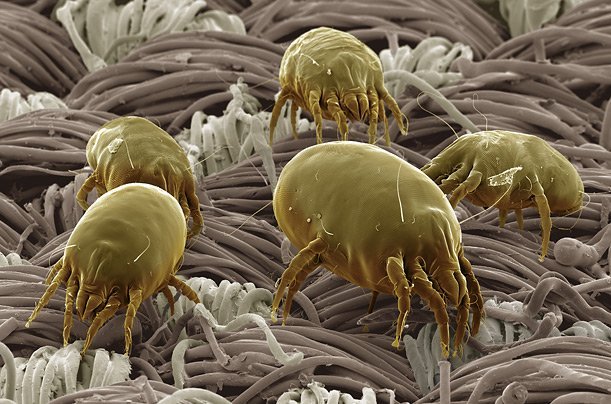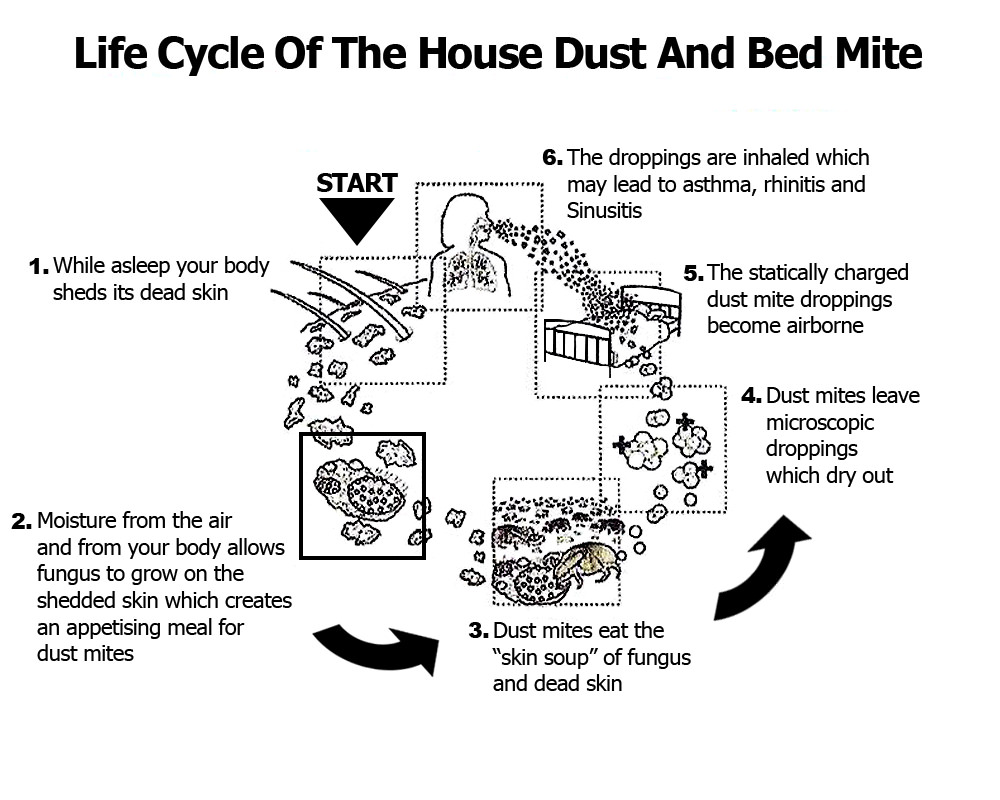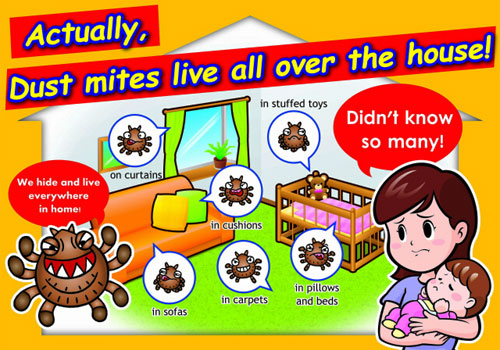
Dust mites, Dander and Dead skin cells…Oh My!
It is the assumption of most folks that your carpets and upholstery are clean until they are riddled with stains. This would be on the same lines of assuming your vehicle is running fine even though you have not changed the oil for over a year and now decide to finally get it changed because you have spotted a drip or leak emanating from your engine. Chances are in both cases, there is more work and costs here than just standard scheduled maintenance. Dust mites, Dander and dead skin cells are the focus here.
House dust contains tiny pieces of fabric, dander, plant matter and creatures so small that they can not be seen by the human eye. These tiny creatures are called house dust mites. Dust mites are present in all homes, no matter how clean you keep it. It’s tough to get away from dust mites, no matter how much you clean and scrub. One gram (1/2 teaspoonful) of dust can contain up to 500 dust mites! In addition to the millions of dust mites that inhabit your home, each female mite can lay 25 to 50 new eggs every 3 weeks.
 Dust mites need to feed to stay alive. They primarily feed on human or pet dander, but mostly survive off of our (and our pets), dead skin cells. Every day we lose approximately 340,200,000 to 453,600,000 dead skin cells, out of our 3 Trillion skin cells the average person has…which translates to around 9 pounds of dead cells a year!
Dust mites need to feed to stay alive. They primarily feed on human or pet dander, but mostly survive off of our (and our pets), dead skin cells. Every day we lose approximately 340,200,000 to 453,600,000 dead skin cells, out of our 3 Trillion skin cells the average person has…which translates to around 9 pounds of dead cells a year!
Let’s put this into perspective; that glass coffee or bed end table you find you need to dust/maintain once a week because it’s covered in a layer of dust mite particles, try not dusting it for well over a year and see how much will accumulate. That same, exact quantity of dust mite particles are also in your carpets and upholstery, but you do not see them like you would on an obvious glass table, but they are there. On a daily basis you are walking on them and sitting on them, continually grinding them into your carpet and upholstery surfaces until they are deep into the fibers. Regular vacuuming of these surfaces does help with the accumulation, but also realize that even with high efficiency filters and bags, your vacuum air exhaust will still blow out dust mite particles, just filtered, smaller & more microscopic forms of dust mite particles. Your vacuum will also only remove the debris from the surface and not all the dust, dirt, debris, spills, etc that you have been grinding deep into the fiber bed by walking on them on a daily basis.
 Your carpet and upholstery needs to be professionally cleaned at least once per year to remove these deep down dirt, debris and dust mite particles that have been consistently accruing day after day. Recommendations would be multiple times per year if you have pets and/or more than 3-4 people living in your home. Worst of all is that ‘guest’ bedroom you keep passing up when professional cleaners are there because it’s rarely used. When the time comes that you do have a guest stay with you, that guest will be breathing in years of dust mite accumulations from the carpet, upholstery and bed linens.
Your carpet and upholstery needs to be professionally cleaned at least once per year to remove these deep down dirt, debris and dust mite particles that have been consistently accruing day after day. Recommendations would be multiple times per year if you have pets and/or more than 3-4 people living in your home. Worst of all is that ‘guest’ bedroom you keep passing up when professional cleaners are there because it’s rarely used. When the time comes that you do have a guest stay with you, that guest will be breathing in years of dust mite accumulations from the carpet, upholstery and bed linens.
Asthma afflicts 20.5 million people in the United States, according to the University of Rochester. Another 35 million Americans suffer from chronic sinusitis, most likely inflamed by allergies, according to the University of Maryland Medical Center “Allergies Health Guide.” Indoor allergens likely aggravate both conditions, since Americans spend 90 percent of their time indoors, according to the EPA’s material on indoor environmental asthma triggers.

If dust mite particles are inhaled or come in contact with the skin of a person who is allergic, they may cause runny nose, itchy eyes, cough, wheezing and skin itching.
If dust mites trigger your allergies, take steps to reduce dust in your home and prevent or minimize allergic reactions:
Wash sheets and pillow cases weekly in hot water and dry in a hot dryer.
Wash blankets and stuffed toys twice a month in hot water and dry in hot dryer.
Professionally clean your carpets and upholstery at least once a year.
Humidity level in the home should be less than 50%. Use a dehumidifier or air conditioner if needed. An inexpensive hygrometer can be purchased at any hardware store to keep track of humidity in the home.
If you have carpet, frequency of vacuuming per week should be determined by how many pets and people live in the home (ie. 2 pets and 2 people = 4X per week, if you have a combination of 7 or more, carpets should be vacuumed daily). Always use a high efficiency filter bag and filter (HEPA)
Filters on the heating/cooling systems should also be changed every 2-3 months with a rating of at least 1200 or higher (to filter out dust mites and dead skin cells)
 Start Breathing easier TODAY by Contacting Us or Call Carpet Dry-Tech for a Cleaner, Greener, Healthier Home @ 678.367.5991!
Start Breathing easier TODAY by Contacting Us or Call Carpet Dry-Tech for a Cleaner, Greener, Healthier Home @ 678.367.5991!




